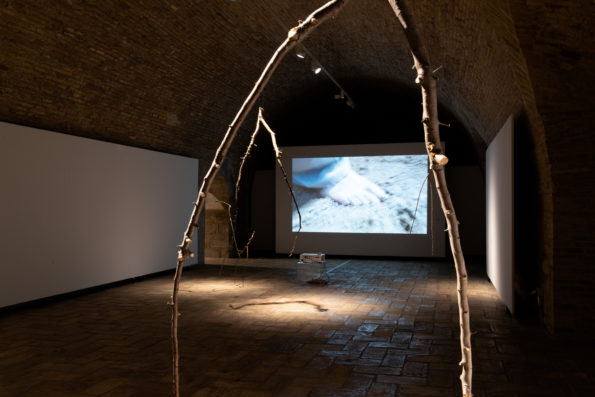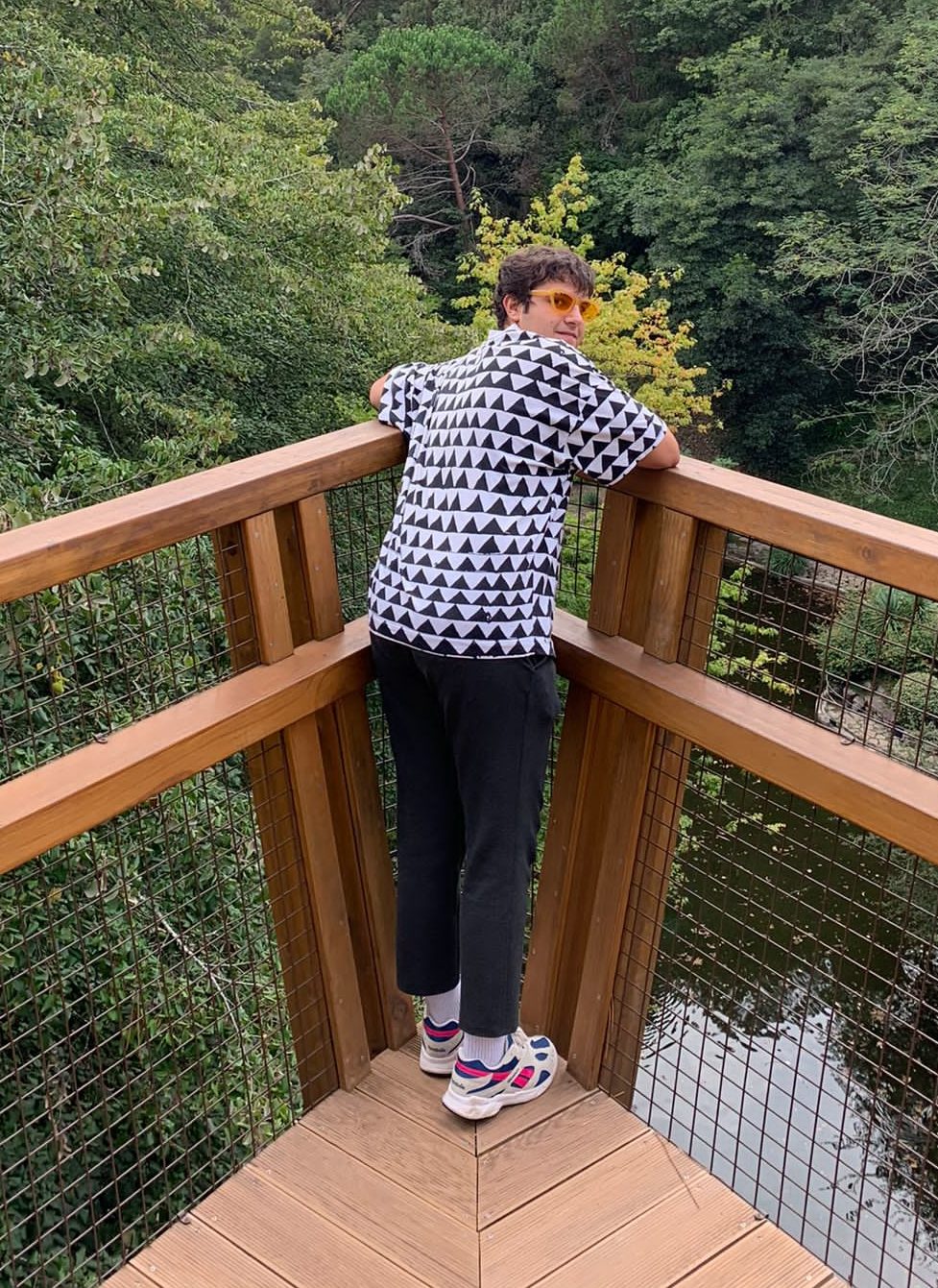Search
To search for an exact match, type the word or phrase you want in quotation marks.
A*DESK has been offering since 2002 contents about criticism and contemporary art. A*DESK has become consolidated thanks to all those who have believed in the project, all those who have followed us, debating, participating and collaborating. Many people have collaborated with A*DESK, and continue to do so. Their efforts, knowledge and belief in the project are what make it grow internationally. At A*DESK we have also generated work for over one hundred professionals in culture, from small collaborations with reviews and classes, to more prolonged and intense collaborations.
At A*DESK we believe in the need for free and universal access to culture and knowledge. We want to carry on being independent, remaining open to more ideas and opinions. If you believe in A*DESK, we need your backing to be able to continue. You can now participate in the project by supporting it. You can choose how much you want to contribute to the project.
You can decide how much you want to bring to the project.

In Pamplona everything has a Nordic air: waste containers that open with cards, people in suits on bicycles, intelligent buildings in front of others of official protection. Navarre is also an oasis in the catastrophe of inequality in Spain. According to the Gini coefficient, which measures inequality, it is in the lowest position. It appears in the list as the second one that invests more in culture. This cannot be a coincidence. During the still summer months of September and October, an exhibition takes place that is already one of the longest-running in the capital of Navarre. Mapamundistas is the brainchild of Alexandra Baurès, who has been curating it since 2007.
In fact, the nature of the project lies in the narrative continuity between its editions. All of them weave a fine thread in the form of a dialogue to remain in the imagination of those who visit it. Looking at the most recent editions, the theme of Movement in 2017 shifted to Immobile in 2018. In 2019 it deviates to the Mirror, as a reflection of immobility and in 2020 it focused on our closest mirror, the mobile, as the place where Transformations take place. The 2021 edition analyzes Movement as transformation through gestures, triggers of emotions. The Look succeeds the gesture in the 2022 edition and creates an element of cohesion between the previous narratives. The result is the sixteenth edition with two stages: Villava and Pamplona and five artists: Sandra Rocha, Oier Iruretagogoiena, Raquel Asensi, Estitxu Arroyo, Abigail Lazkoz.
In Villava, nature is the focus of special attention, in the old fulling mill the diaphanous water runs along its course, weakened by the drought. In this context is shown Tentare, the work of Raquel Asensi, under the narrow beams of the twelfth century. A sober art that connects with the minuscule where the gaze does not reach, but intuition does. The main format she works with is ceramic, combining it with different materials, such as wood in Abyss-ãlis. In this piece the central element is the algae of the Cantabrian Sea that have moved to deeper waters due to global warming. In another work, Ideonella, she depicts small bacteria that are capable of promoting the disintegration of PET plastic. The essence of her work illuminates a reality outside the field of vision, the artist appears as a producer in the service of ecology. In the work Ideonella’s Birth, she combines natural and artificial materials as a reflection of post-industrial reality, illustrating the demise of aesthetics without a message. The photograph shows a woman covered in plastic and holding the glazed ceramic piece over the Azkorri bunker, announcing the death of Botticelli’s work.
In the Citadel of Pamplona, the other scenario that occupies this edition of Mapamundistas, we find a totally different space. If in Villava the exhibition was diaphanous and clear, here the sensation is one of seclusion and darkness. A 16th century oven is used to exhibit the works of the Basque artist Abigail Lazkoz. Erebo, shows a work linked to the importance of the shadow and the hidden within the artistic composition, claiming a return to the plastic in the face of the rise of the conceptual. She challenges the Western notion of the shadow, inherited from the medieval fear of the unknown, and delves into the limits of Tanizaki’s famous work In Praise of Shadows. For the artist, what the object hides is more suggestive than the object itself; in a composition that relies on blacks, whites and grays, giving it a solemnity in keeping with its surroundings.
In the Mixed Pavilion, the works of Estitxu Arroyo and Sandra Rocha are exhibited. Estitxu is a multidisciplinary artist who uses art as a kind of inner search and knowledge of the environment. What is visible and what is hidden, focuses on video installation and research about the dowsers around the concept of vibration. Framed in a trilogy that emanates from his long trajectory in the world of yoga and spirituality, where the binomial body and mind explores the contraposition of the concepts modernity/tradition and rational/irrational. In his proposal for Mapamundistas, he has chosen the figure of the dowser as an element that confronts vibration with the rational world. A technique that has been historically questioned and that continues to survive the hegemony of the great narratives that try to convince that all progress is good. Estitxu collects the utensils used and relates them to her previous studies on Hinduism. Art appears as an element of mediation between the world of the visible and the perceptible, vindicating the weight of tradition in the face of noise and chaos.
In Sandra Rocha’s work, entitled Le moindre souffle, an ecological story of great fragility is elaborated through photography, based on several dynamics: the first is the use of the mirror and the reflections in the medium, generating a change of dialogue and breaking with the limits of the photographic frame. It represents the condition of the ephemeral and the eternal, mixing portraits of young people with others of living beings that are about to disappear or have already done so, to establish a correlation between the living and the dead, the active and the passive or the tranquility and the effervescence of life. A search for the recognition of nature as a fellow being, in the face of the rise of hedonism and narcissism. In a sort of photographic pantheism, he blurs the boundaries between the subject and the medium.
Finally, a few kilometers away from the Citadel, Oier presents his work Paisaje sin mundo at the Public University of Navarra. The artist creates large murals where he combines plastic waste with amateur paintings of bucolic landscapes and dried flowers. Through a large format, he extols urban dehumanization, which arises from a constant contradiction between the natural and the processed. Murals that seem to have been collected after an apocalypse. A judicial trial in which the intention is to condemn consumerism. In striking contrast to the exhibition space, the UPNA, where the murmur between class changes and the image of young people rolling a badly pressed cigarette. In a room, illuminated with white halogen lamps and white walls, reminds us that the University has to continue betting on the constitution of a critical look.
Lacan, in his theory of the mirror stage, places in the act of recognition of the child, a crucial event for the relationship of the subject with the alienating notion (his social condition). It is in the identification itself that the constitution of the self takes place, where the link with society begins. The gaze plays a central role in this process, without it the process would be impossible and the subject would remain halfway between the natural and the social. In Mapamundistas we find a very clear parallelism. The gaze appears as a gift of the human condition, but a limitation at the same time. It is difficult to detach oneself from the imprint that education and society have sculpted on it for many years.
The artists on display encourage us to reflect on our beliefs and question them, introducing us to suspicion. The different spaces occupied by the exhibition are related to the states of the human being: Raquel’s work in the Batán with the natural state, Oier’s in the University with the critical-formative stage and those of Sandra, Estitxu and Abigail in the Citadel with the civilized or isolated life. Art appears as a tool at the service of the spectator, a praise to simplicity, much coveted in a time of noise and speed. It has the difficult condition of being universal, involving the most heterogeneous sectors of society. Mapamundistas constitutes by this set of attributes a complement that fits the condition of Nordic oasis that is attributed to Navarra, an island where you can recycle and pedal at ease and why not, claim the peripheral abstract art.
(Featured image: Lo que es visible y lo que está oculto. Escuchar la vibración de Estitxu Arroyo. Pabellon de Mixtos (Ciudadela). Credit Kiko Ortega Lafuente)

Santiago Concheiro. Between the limits where art ends and society begins… Or was it the other way around? Passionate about the Humanities and artistic proposals that lead to social change. Santiago Concheiro has a degree in International Relations and is currently finishing Art History.
"A desk is a dangerous place from which to watch the world" (John Le Carré)